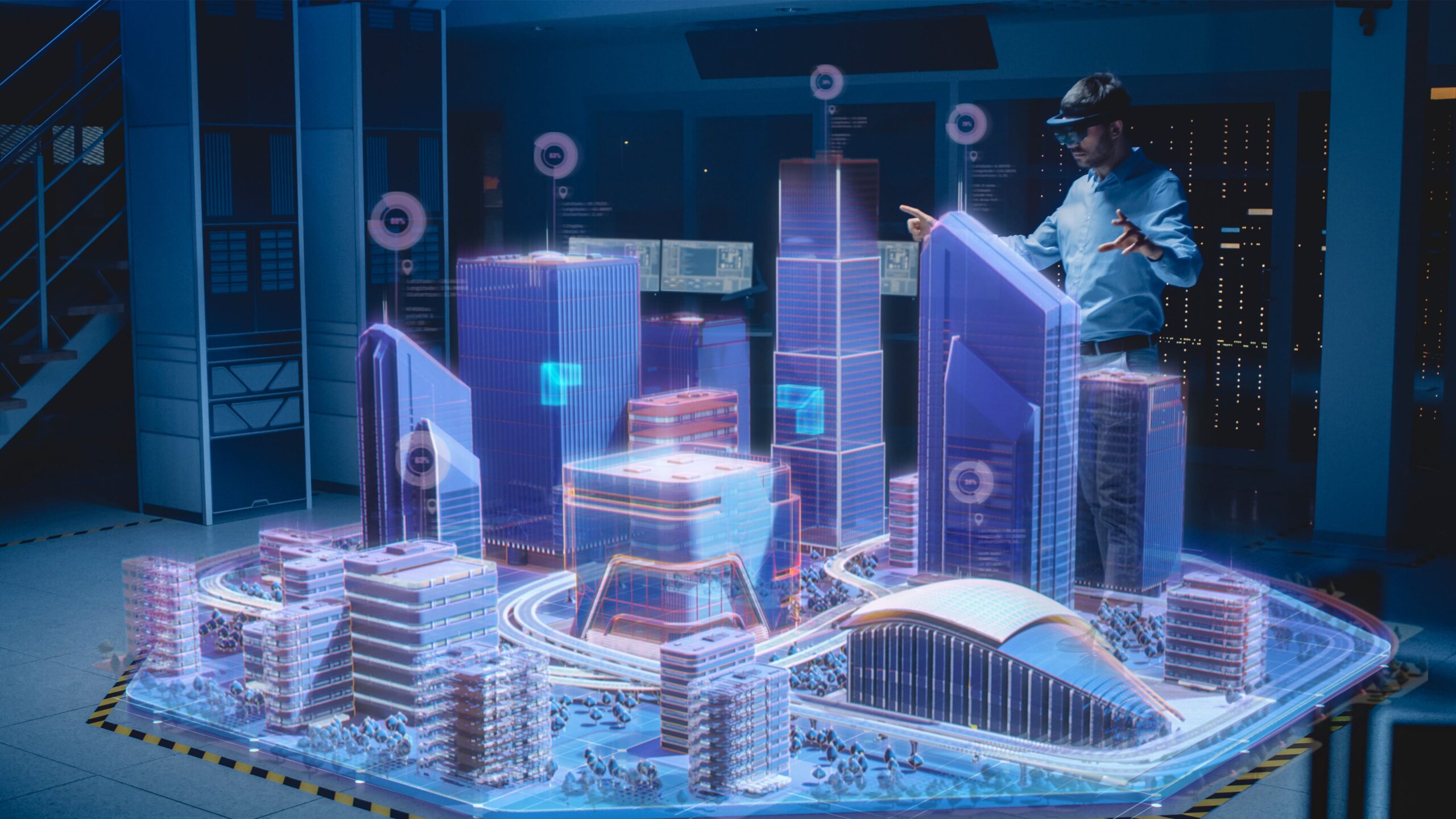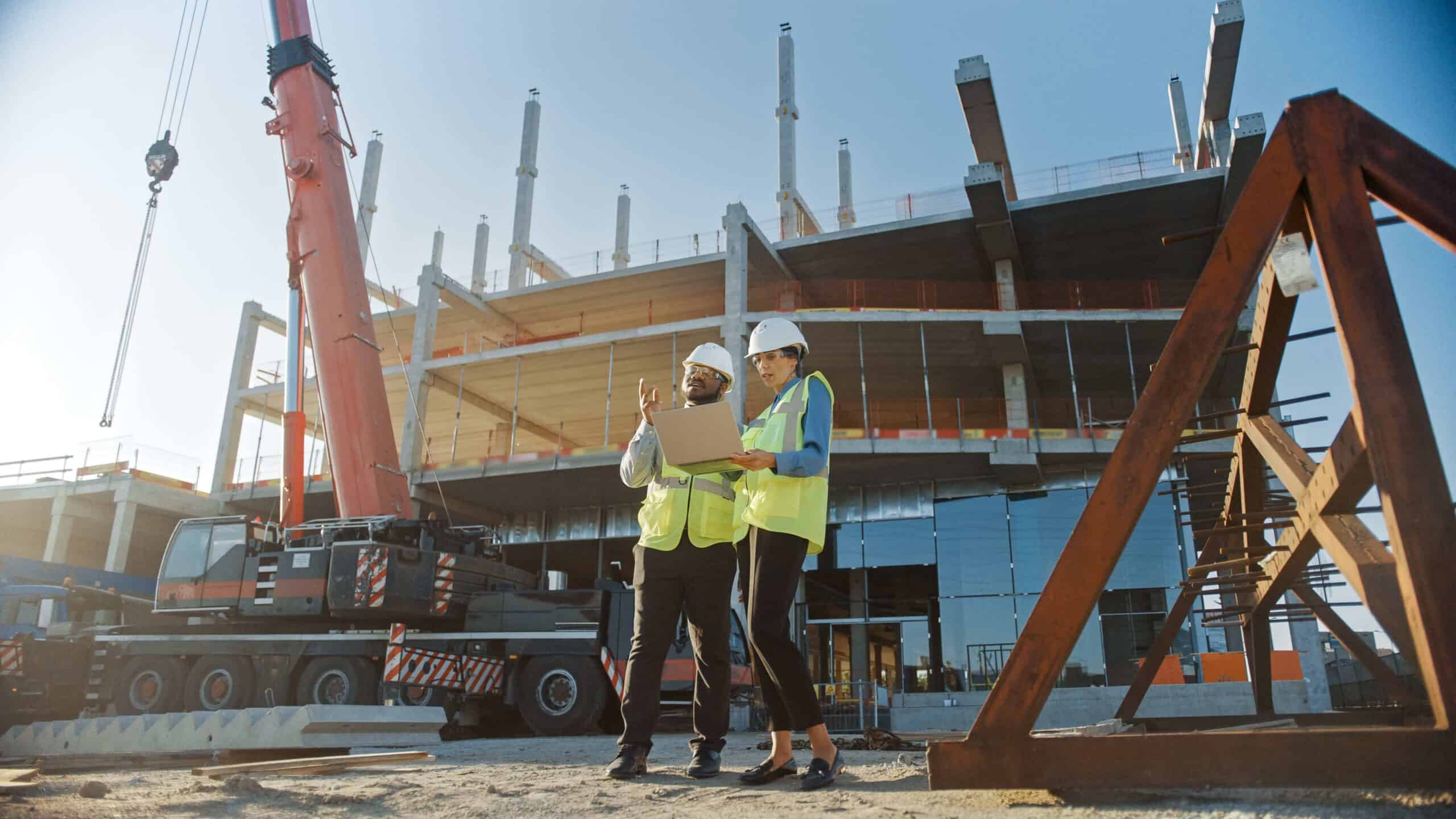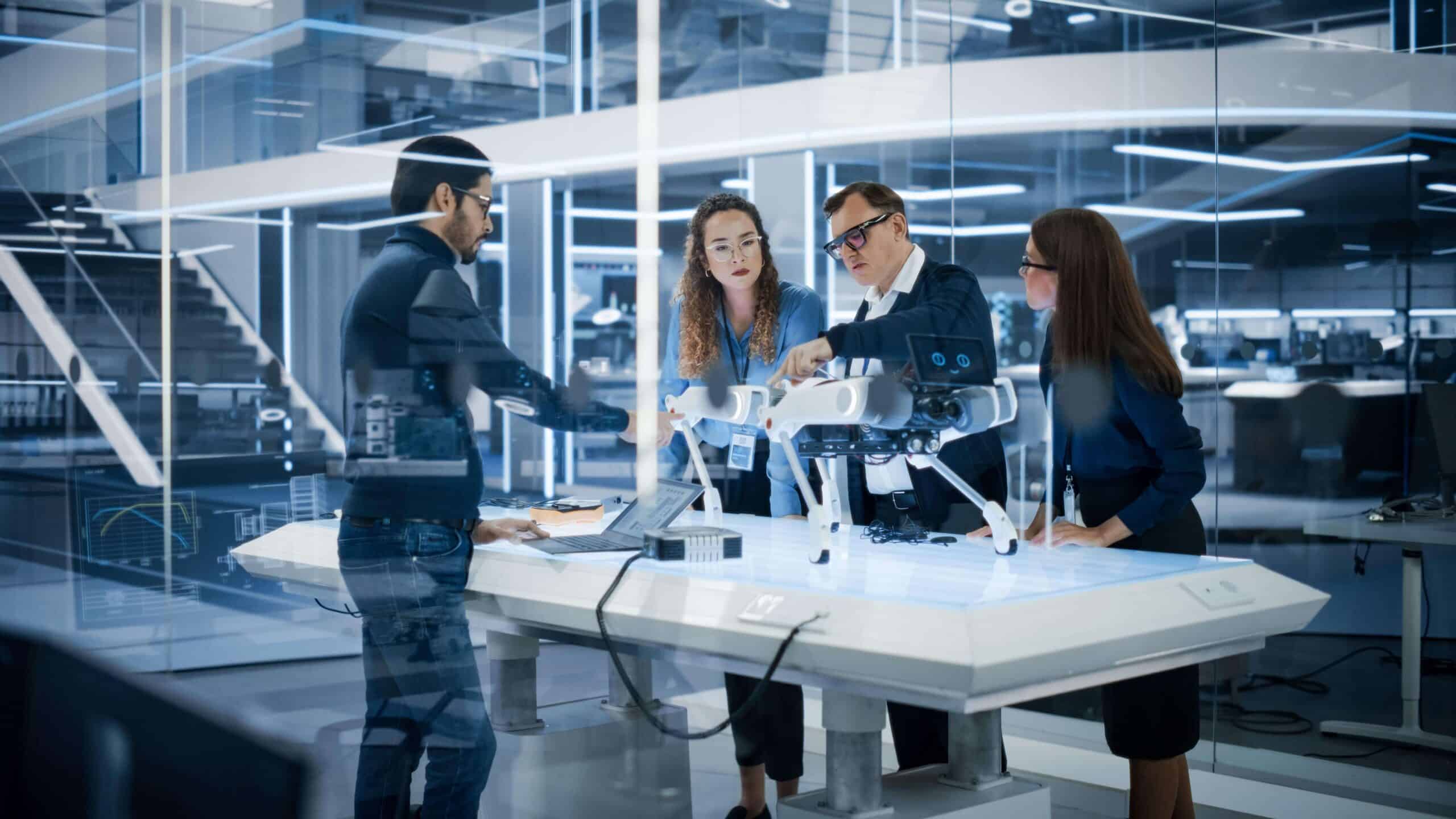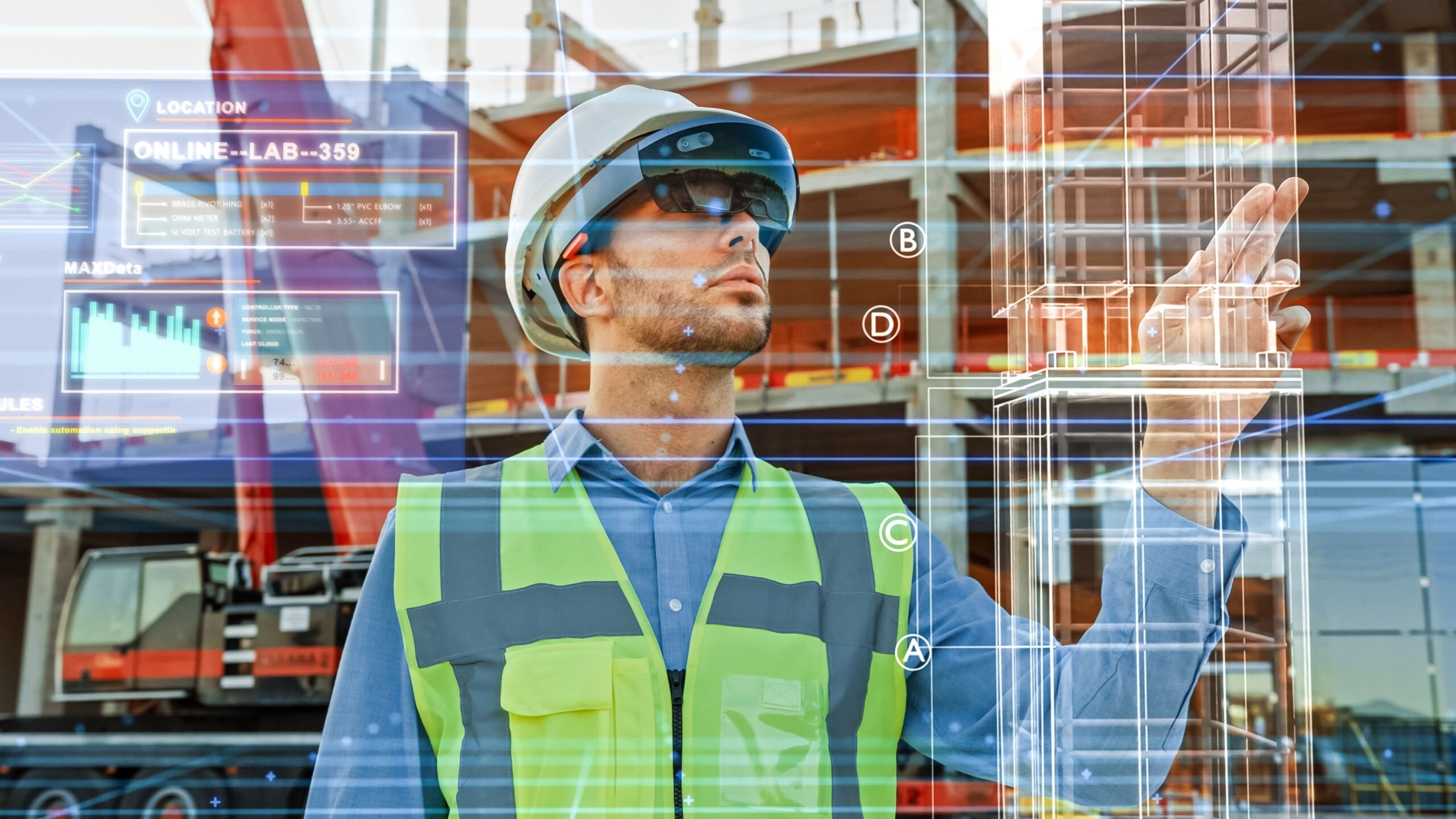- Streamlining construction design with VR games
- Teaching jobsite safety through virtual reality
- Promoting a positive safety culture
- The construction industry enters the metaverse
Typically known for its complexity, rigorous demands, and tight schedules, the construction industry is currently experiencing a transformative shift, driven largely by emerging technologies like artificial intelligence, virtual reality, and 3D printing. In this rapidly evolving landscape, the integration of gamification has emerged as a groundbreaking approach that promises to revolutionise how construction projects are planned, executed, and managed. Gamification, which can be described as the art of applying game elements and mechanics to non-game contexts, has transcended its origins in the gaming world to become a potent tool for enhancing productivity, safety, and efficiency within the construction sector.
While constructing physical structures may seem worlds apart from the virtual realms of gaming, the principles of gamification have proven highly adaptable and beneficial. In the realm of construction, gamification is not about turning worksites into game boards, but rather about leveraging the motivational power of games to engage workers, improve their skills, and ultimately drive better outcomes for projects. This article delves into the fascinating intersection of construction and gamification, exploring how this innovative approach is reshaping the industry. We’ll look at the diverse ways in which gamification is being applied, from enhancing training programmes to boosting worker morale and safety. As we journey through the construction sites of the future, it becomes clear that gamification is not merely a trend but a transformative force that holds the potential to unlock unprecedented levels of efficiency, collaboration, and success in construction projects.
“For us, it’s been a game changer. Delivering an interactive virtual-reality experience with our BIM models truly disrupts the status quo in a traditionally conservative industry”.
Thomas Angeltveit, a civil engineer and BIM coordinator at Norconsult
Streamlining construction design with VR games
As the largest architecture, engineering, and design consultancy in Norway, Norconsult has been involved in more than 20,000 infrastructure projects since its establishment back in 1929, including the design and construction of airports, highways, railways, dams, bridges, and tunnels. Among these projects, one in particular stands out due to its complexity — the construction of the Ulriken Tunnel. Situated on the final leg of the famed Bergen Line, which connects Norway’s two largest cities, Oslo and Bergen, the 7.8-kilometre tunnel beneath Mount Ulriken has become a major bottleneck over the years, as its limited capacity prevents it from meeting the region’s growing passenger and freight transportation needs. To address this issue, Bane NOR, Norway’s state-owned rail authority, tasked Norconsult with building a second tunnel that would run parallel to the first one, essentially doubling its capacity. In addition to a wide range of technical challenges, including having to excavate hard rock using a 1,800-ton tunnel boring machine, the project also presented numerous administrative hurdles, of which the most notable was getting regulatory approval for the sign and signalling system.
But why exactly is it so difficult to get the necessary approvals? Part of the reason is that signals are usually installed years before train operators actually get an opportunity to test them, which inevitably leads to a large number of errors. This time, Norconsult decided to take a different approach. First, using AutoCAD, Revit, and Civil 3D, the company created BIM models for the tunnel project and station upgrades, which were then transferred into a game environment created specifically for this project. The idea behind this was to enable train operators to drive on future tracks before they are actually built in real life, allowing them to identify potential issues with signals and suggest improvements. “Working with train drivers gave us a better understanding of their thought process”, explains Thomas Angeltveit, a civil engineer and BIM coordinator at Norconsult. “We were able to benefit from their experience driving a real train”. The game has also proven beneficial to emergency responders, as it allowed them to familiarise themselves with evacuation routes and simulate emergency scenarios in the virtual environment. “In the end, we can help to deliver a better, safer tunnel and stations than ever before”, says Angeltveit. In fact, the implementation of gamification on this project was so successful that the company decided to make it a standard operating procedure on all of its future rail projects. “For us, it’s been a game changer”, adds Angeltveit. “Delivering an interactive virtual-reality experience with our BIM models truly disrupts the status quo in a traditionally conservative industry”.
Teaching jobsite safety through virtual reality
There are few work environments more dangerous than a construction site. From heavy machinery and hazardous materials to live wires and loose nails, every construction site is filled with dangers that can adversely affect the health and safety of the people who work there. To address these dangers, the construction industry employs strict safety protocols and continually trains workers in safety procedures. Traditionally, the industry has primarily relied on classroom-based instruction and manuals to teach workers how to identify potential safety hazards. However, while these methods have proven beneficial over the years, they do have some serious drawbacks. After all, there is a huge difference between reading or hearing about something and experiencing it firsthand. This is why more and more companies are starting to incorporate emerging technologies like virtual reality (VR) into the training process. The idea behind this is to create a more immersive learning environment that will ultimately lead to better learning outcomes and reduce the number of safety incidents at construction sites.
One of these companies is Dysruptek, the corporate venture capital arm of the architecture, engineering, and construction (AEC) firm Haskell, which recently launched a new VR training platform called Hazard Elimination Risk Oversight, or simply HERO for short. Once trainees put on a VR headset, they are transported to a game-like virtual environment and given tasks like exploring a construction site from a first-person perspective and reporting any safety hazards they come across. “Our motto has always been, ‘For the betterment of the industry,’”, says Hamzah Shanbari, director of innovation and strategic initiatives at Haskell. “What we are trying to do here is move forward in a much safer manner amid a more digital age”. By turning the training process into something that resembles a video game, the company has managed to make this typically mundane activity into something more fun and engaging, which in turn leads to improved learning outcomes. According to a research trial conducted at Texas A&M University, immersive VR training produces much better results than conventional training methods. In addition to having a positive impact on safety awareness comprehension, VR technology also significantly improved trainee test scores. Overall, more than 90 per cent of the participants in the trial gave HERO a positive score.
Promoting a positive safety culture
Another interesting example of the successful use of gamification within construction comes from Australia, where some of the country’s biggest construction companies like Laing O’Rourke, John Holland, and Richard Crookes have already implemented an innovative safety app called Scratchie. Founded by two Australian construction industry veterans, the app enables supervisors to reward workers who demonstrate specific safety behaviours, such as the proper use of personal protective equipment. Rather than taking an approach in which workers are ‘punished’ for not adhering to safety measures, Scratchie relies on the principle of positive reinforcement to motivate workers to do the right thing and foster a positive safety culture on construction sites. What’s more, the app integrates seamlessly with existing safety platforms like Procore and Hammertech, allowing companies to enhance their safety culture without having to abandon their preferred safety management tools.
Although initially developed for the construction industry, the app can easily be adapted for use in any other sector where workplace safety is paramount, such as manufacturing, healthcare, and logistics. It allows each sector to create its own reward categories so that it can meet its unique safety needs and regulations. For example, while working on the new Australia Post sorting facility in Sydney, Richard Crookes implemented Scratchie to promote a positive safety culture among its workers and streamline safety management processes. This turned out to be an excellent decision. In addition to improving safe work attitudes by 28 per cent, the app’s rewards system also had a significant impact on worker satisfaction, with 96 per cent of workers admitting that they preferred working on a site that utilises Scratchie. The app also proved beneficial to supervisors, allowing them to save 1-2 hours per week as workers would often complete safety housekeeping tasks on their own without having to be specifically instructed to do so.
“From immersing design teams in a digital twin during the early development phases to helping with public consultations, to training onsite teams, to changing the BIM model during construction and then through to monitoring and maintaining the asset after construction, metaverse technology can be used and it should be viewed as a tool to be used throughout an asset’s full lifecycle”.
Darren Anderson, head of asset management and process digitisation at Ferrovial
The construction industry enters the metaverse
As one of the most talked about innovations in recent years, the metaverse has attracted a lot of interest from many different industries and construction is no exception. This innovative technology promises to significantly improve collaboration on construction projects and enable teams to identify potential issues long before the structure is actually built. One of the companies that have already invested heavily in the metaverse is the Spanish engineering giant Ferrovial, which recently partnered with major tech companies Microsoft, Bentley Systems, Autodesk, and Nvidia, as well as game engine developers Unity and Unreal Engine, to create a new virtual platform called Infraverse, which is designed to help construction companies solve real-world infrastructure problems in a virtual environment. “For the first time, we are combining advanced visualisation technologies and virtual gaming environments with the operation of real transportation and energy infrastructures”, says Rafael Fernández, innovation director at Ferrovial. “Immersive environments that combine the real world and virtual reality enable interaction between the two and have direct applications in the company’s everyday activities. This interaction affords Ferrovial a strong degree of flexibility in design as well as efficiency in asset management and operation. It also improves safety for workers and users”.
So far, the company has already used the platform on 10 major projects, including the creation of an immersive 3D model of the North Tarrant Expressway in Texas, which was used to simulate the reactions of road users to various scenarios, such as traffic accidents, lane closures, or changing lighting and weather conditions. Simulations like these enable construction companies to assess the impact of design decisions on infrastructure operation and safety and make the necessary adjustments to prevent any accidents. “From immersing design teams in a digital twin during the early development phases to helping with public consultations, to training onsite teams, to changing the BIM model during construction and then through to monitoring and maintaining the asset after construction, metaverse technology can be used and it should be viewed as a tool to be used throughout an asset’s full lifecycle”, adds Darren Anderson, Ferrovial’s head of asset management and process digitisation.
In closing
In the ever-evolving world of construction, where precision, safety, and teamwork are paramount, the incorporation of gamification has proven to be a game-changer. Our exploration of these exciting developments reveals that gamification is not merely a passing trend but a lasting innovation that is reshaping the industry from the ground up. It’s clear that this transformative approach is not just about making work more engaging — it’s about enhancing productivity, improving worker satisfaction, and ensuring that each project is executed with greater precision and efficiency. From incentivising skill development to fostering a sense of camaraderie among teams, gamification’s many benefits have the potential to greatly improve the success of construction projects. Moreover, as technology continues to advance and new generations of workers enter the industry, the integration of gamification is likely to become even more prevalent. Its adaptability and ability to bridge the generation gap make it a powerful tool for addressing the ongoing challenges facing the construction sector. The power of gamification lies not only in its ability to make work more enjoyable but also in its capacity to unlock the full potential of construction teams. It is a reminder that, in the construction industry, the sky is not the limit; rather, it’s the starting point for reaching new heights through innovative approaches like gamification. As we conclude our exploration, it’s fair to say that the future of construction is not just being built — it’s being gamified, and the results are nothing short of extraordinary. The integration of game-inspired strategies and technologies promises to shape a construction industry that is safer, more efficient, and ultimately more successful than ever before.




